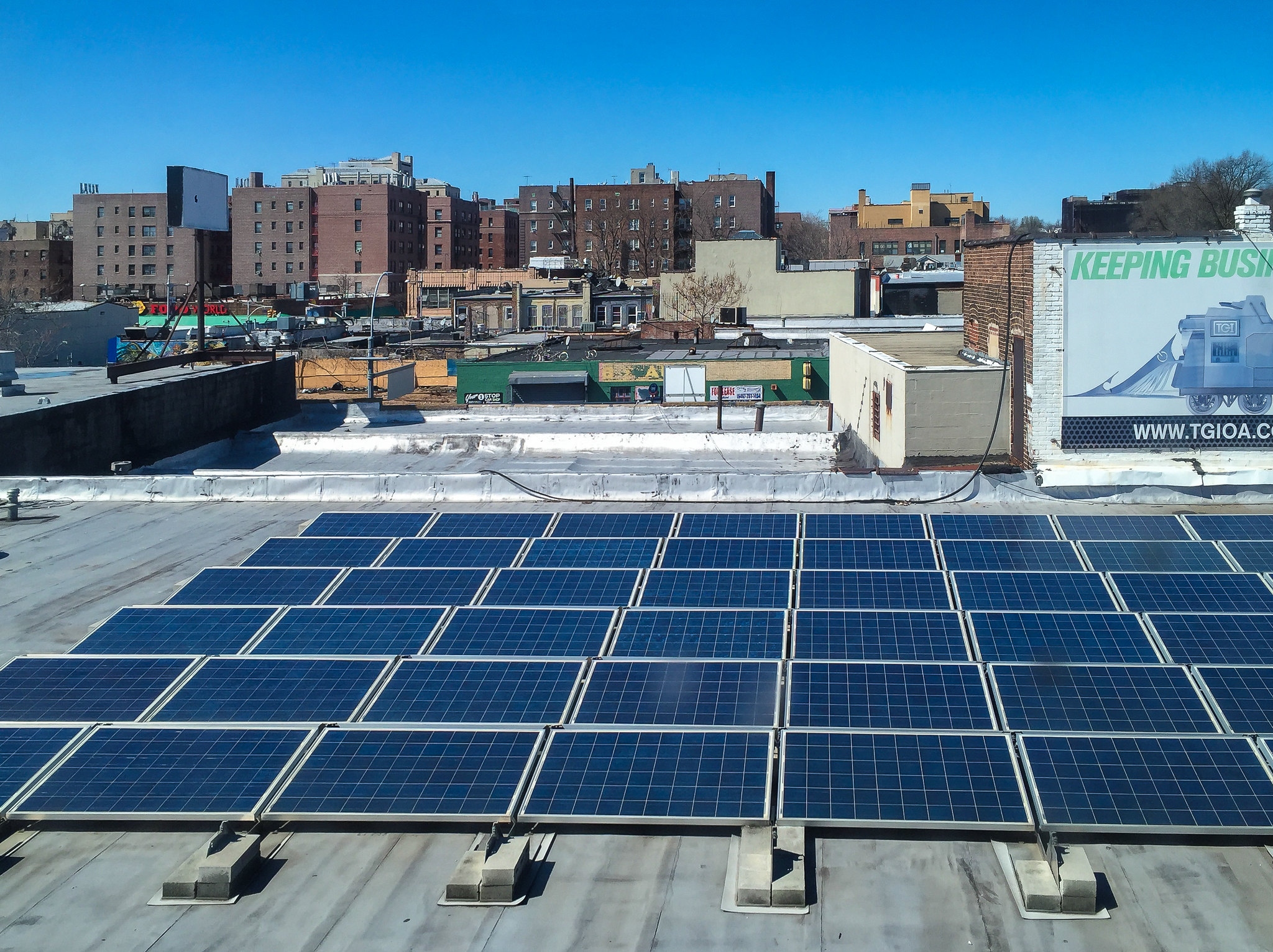A city-wide study shows urban planners more precisely what they can achieve by covering roofs in white coatings, vegetation, or solar panels.
13 December 2022

Cool roofs like this one on a Walmart can reduce urban temperatures during heat waves. Image credit: Walmart via Flicker.
AGU Press Contact:
Liza Lester, +1 (202) 777-7494, [email protected] (UTC-5 hours)
Contact information for the researchers:
Haochen Tan, Argonne National Laboratory, Lemont, IL, United States, [email protected] (UTC-6 hours)
CHICAGO — A new city-wide model showed that updating all roofs in Chicago from traditional materials to white, green or solar panel-covered roofs would lower air temperatures by as much as 2 degrees Celsius and reduce energy consumption more than 16%. This research will be presented on Wednesday, 14 December at AGU Fall Meeting 2022.
“Previous studies have shown the advantages of implementation of cool roofs and green roofs in urban areas at a building scale or neighborhood scale,” said Haochen Tan, an atmospheric scientist at Argonne National Laboratory. “However, such advantages cannot simply transfer to city-scale benefits because of the differences of each building and the local climate.” Tan and colleagues wanted to scale up those previous studies and look at the effectiveness of heat-mitigating roofs over an entire city.
The study focused on the Chicago metropolitan area during a 6-day heatwave in August 2021. The team used numerical weather prediction models to see what would happen if the roof of every building in the city were changed to either cool (white, reflective coating), green (vegetation), or solar panel-covered roofs.
“Results show that the deployment of the cool roof can reduce the air temperature by about 2 degrees [Celsius] over their most urban areas,” said Tan. “Cool roofs can reduce the hours of high temperatures during a heat event day.”
With lower temperatures, there is less need for air conditioning. Tan says at the city-wide scale, cooling energy consumption can be reduced by 16.6% when cool roofs cover buildings. Green roofs and solar panel roofs were also effective at reducing energy consumption, creating drops of 14.0% and 7.6%, respectively.

City Hall in Chicago has a green roof, with vegetation. Image credit: TonyTheTiger via Wikimedia Commons.
There are trade-offs for each of these roof materials, said Tan. For example, large-scale deployment of cool roofs has the best potential for cooling, but the performance can be misleading because the reflective material can degrade over time because of weathering or dirt accumulation. On the other hand, solar panels have a lower reduction in energy consumption and can be expensive to install in maintain, but the roofing material is not passive. “If we assume that all electricity generated by the solar panel can be applied to the cooling demand, we can expect savings of almost half (46.7%), of cooling energy consumption,” said Tan.
The researchers, who have recently published their findings in Science of The Total Environment, note that their study can help city planners decide what roof materials would be best when trying to mitigate heat waves.
###
AGU (https://www.agu.org/) is a global community supporting more than half a million advocates and professionals in Earth and space sciences. Through broad and inclusive partnerships, we advance discovery and solution science that accelerate knowledge and create solutions that are ethical, unbiased and respectful of communities and their values. Our programs include serving as a scholarly publisher, convening virtual and in-person events and providing career support. We live our values in everything we do, such as our net zero energy renovated building in Washington, D.C. and our Ethics and Equity Center, which fosters a diverse and inclusive geoscience community to ensure responsible conduct.
Notes for Journalists:
Tan will present the results of this work at AGU Fall Meeting 2022. For information about Fall Meeting 2022, including the schedule of press events, visit the online Media Center. Neither the presentation nor this press release is under embargo.
Presentation abstract:
A35M-1635 – Impact of Different Roofing Mitigation Strategies on Near-Surface Temperature and Energy Consumption over the Chicago Metropolitan Area During a Heatwave Event
Wednesday, 14 December 2022, 15:45-19:15 CST
Poster Hall, Hall A
